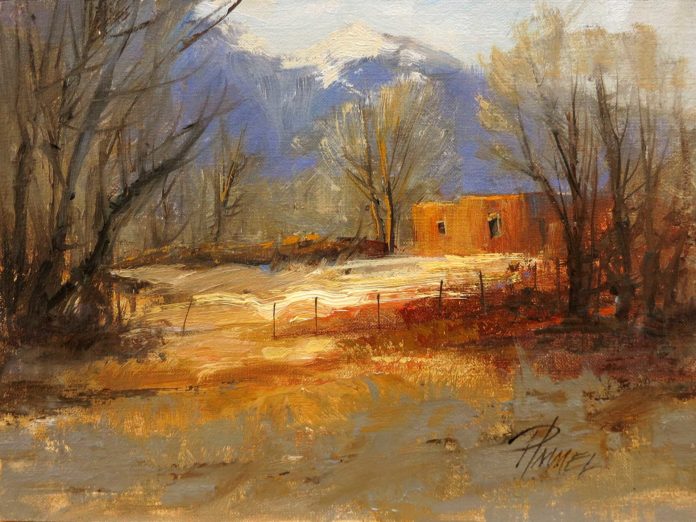Tempted to cover up an awkward part of your painting with a random landscape element? Find out why you shouldn’t, and more great advice, in this guest blog post from outdoor painter Peggy Immel.
Architecturals in the Landscape: A Painterly Approach
BY PEGGY IMMEL
I love seeing the contrast of natural and man-made things in a painting. In fact, who doesn’t love Ruisdael’s Dutch vistas dotted with windmills or Nicolai Fechin’s take on the landscape of his adopted New Mexico home in paintings like “Winter Landscape, Taos”?
The line quality and shapes of architectural subjects are a wonderful counterpoint to those of nature, and they provide a frame of reference about the location and scale of the landscape in a painting. If you like the feel of landscapes with buildings, fences, or roads in them as much as I do, and want to include them in your own work, there are a few practices I’d recommend for both the planning and execution stages.
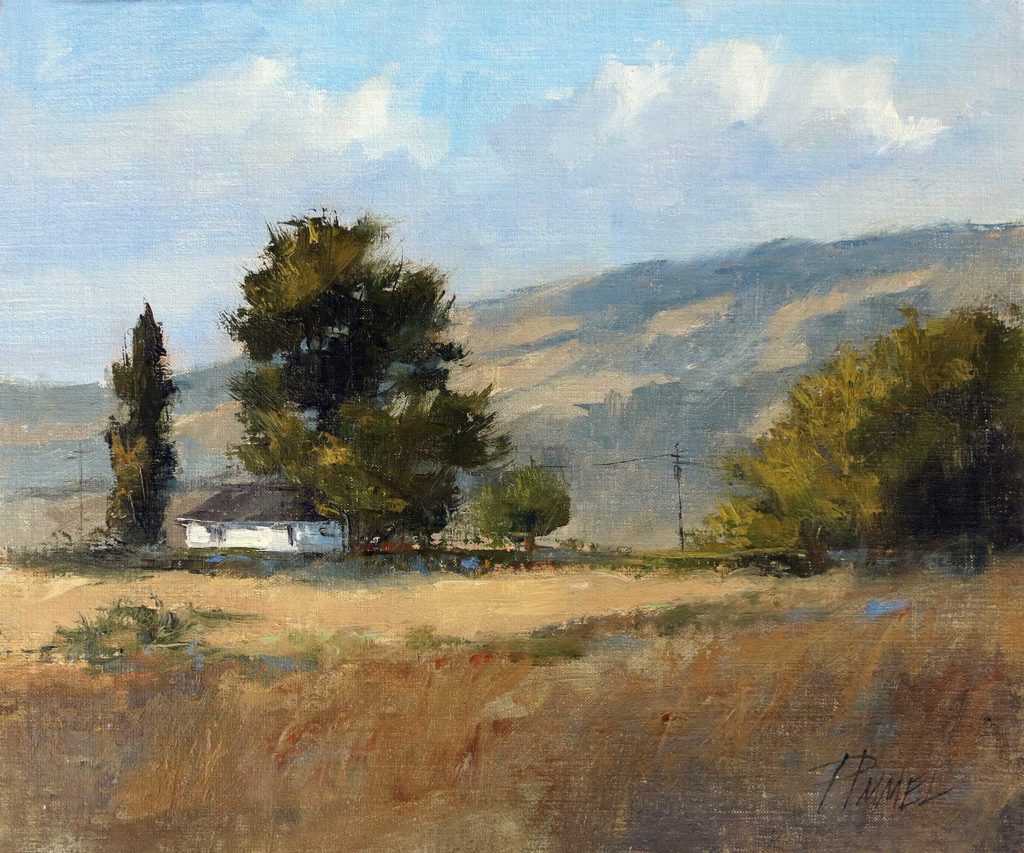
Buildings are a natural center of interest in a landscape. If you are going to paint a sunset scene and it also has a barn in it, you’ll have to decide whether the barn or the sunset is going to be the star of your piece and which one is the supporting player. Otherwise they will compete for viewers’ attention. One obvious solution to the barn and sunset dilemma, for example, might be to combine them by putting the sunset behind the barn. There are many other ways it could be handled, and no single choice is ever the only choice. That is one of the most enjoyable things about painting. We are each the master of our own point of view.
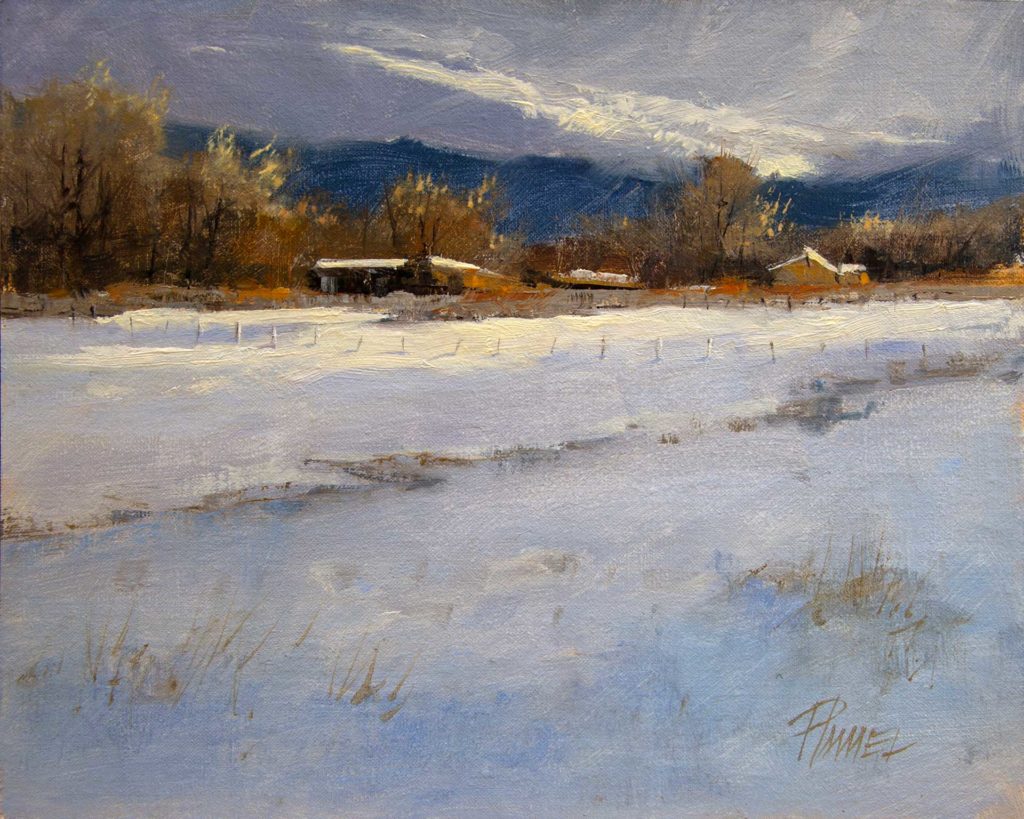
Speaking of the center of interest, covering up the corner of a building with a tree or a bush because you can’t get it quite right in your painting will have the opposite result you are looking for. Instead of hiding the problem it will act like a magnet for the viewer’s eyes, and they will zoom right into that hidden corner and wonder what exactly is happening behind that bush. The whole effect becomes unsettling, and as a result the painting never feels quite right. It’s important that the shapes and key parts of architectural subjects be clearly understood by the viewer.
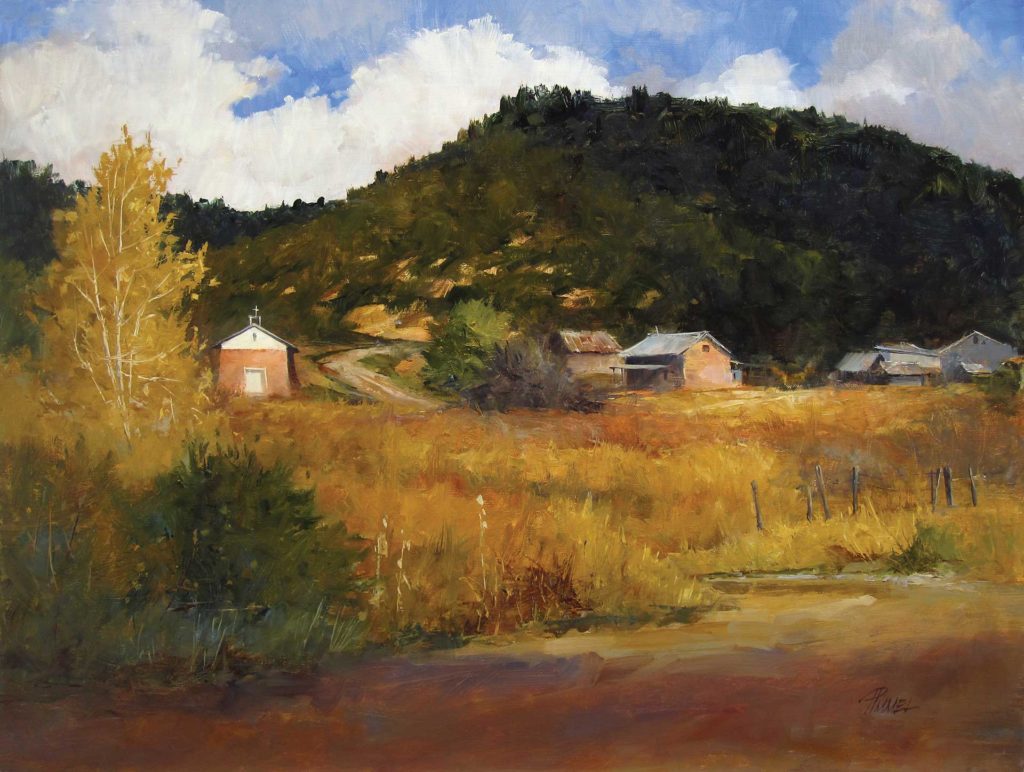
Another thing to be aware of when painting architectural subjects is a tendency to make the same things look exactly alike. For example, if a building has three windows in it, and they are all on the same wall and the same size, we often paint them with the exact same color, the same value and the same degree of edge definition. So those three windows end up looking sort of fake and boring. It is much more interesting to make each of the items a little different by varying the color in them or by changing the sharpness of the edges here and there. The physical world is entropic and buildings decay just like trees and old cars.
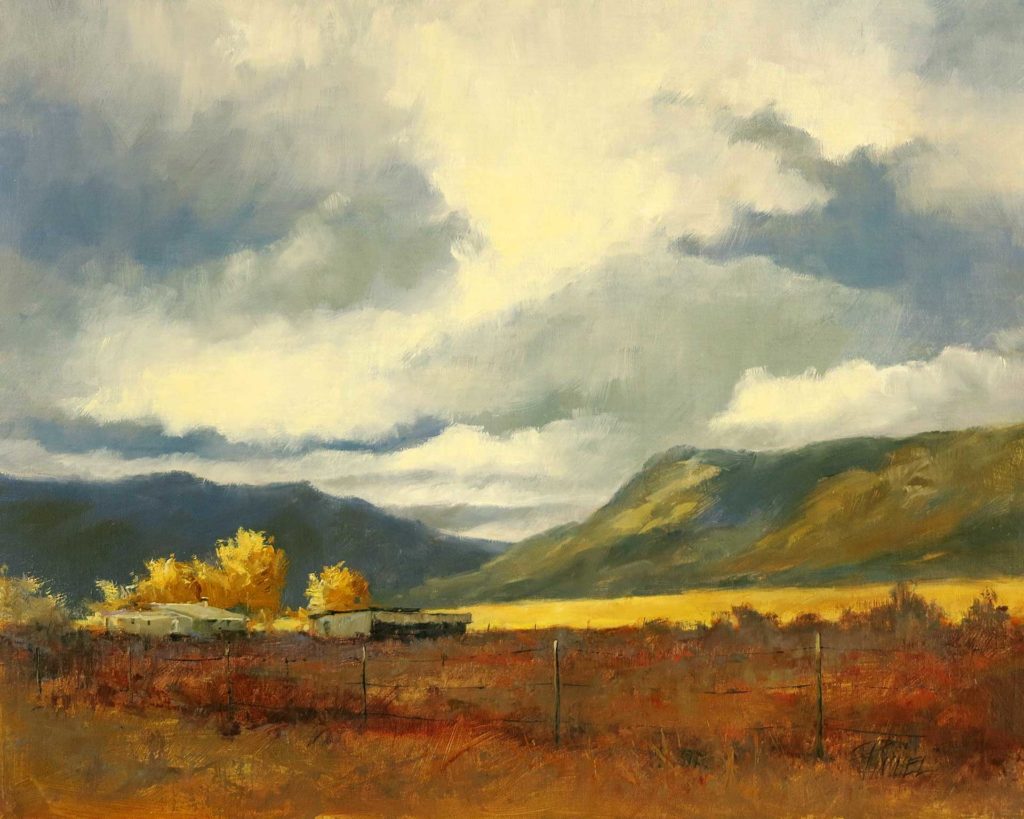
A basic understanding of perspective and how it works is the foundation for being able to paint believable architectural subjects. There are many excellent books on the subject but one of my favorites is Ernest R. Norling’s Perspective Made Easy published by Dover press. It is inexpensive and explains the principles in simple terms.
These are just a few of many ideas for how to handle some of the unique problems encountered when painting architectural elements in landscapes. Studying how Fechin and other masters approached the process is definitely a great place to start and it’s fun in the bargain.
***
This article originally appeared in 2018 in Plein Air Today.
Visit peggyimmel.com to see more of the artist’s work, and listen to her feature interview on the PleinAir Podcast with Eric Rhoads here:
Join Eric Rhoads on the journey of being a better painter with The Plein Air Podcast, and turn your artistic abilities into a sustainable income with the Art Marketing Podcast. Subscribe to the podcasts now at ArtPodcasts.com.
Like this? Click here to subscribe to PleinAir Today,
from the publishers of PleinAir Magazine.

